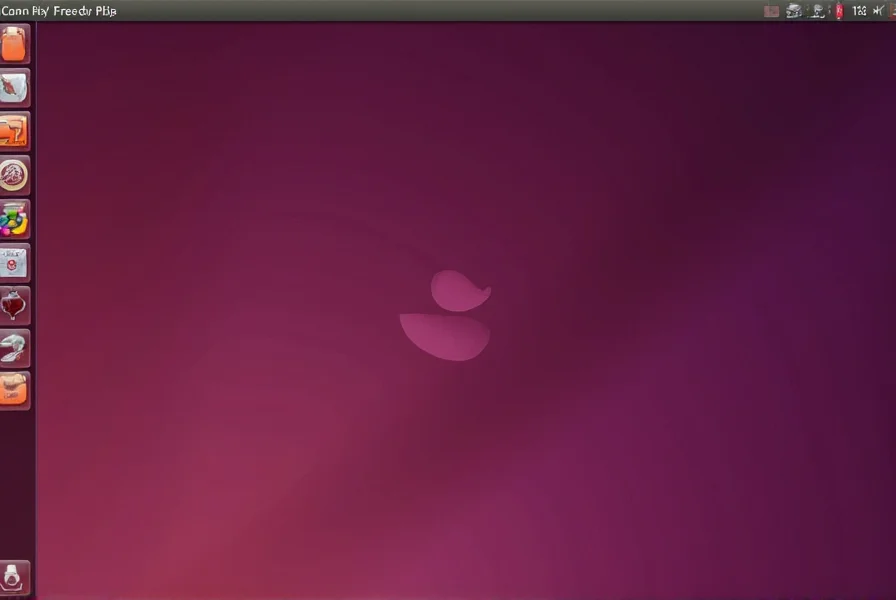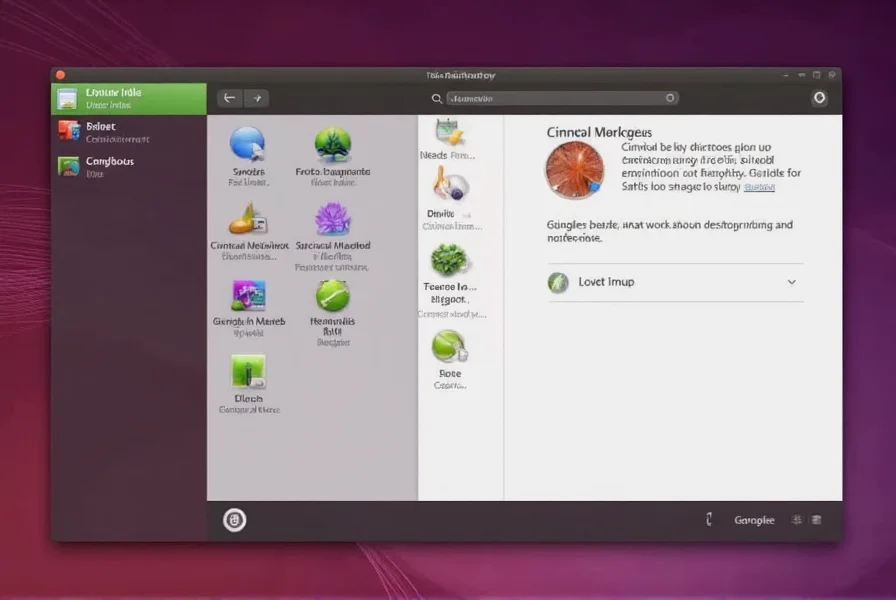The Cinnamon desktop environment delivers an intuitive computing experience that bridges the gap between classic desktop paradigms and modern functionality. Unlike many contemporary Linux interfaces that prioritize minimalism, Cinnamon maintains familiar elements like taskbars, system trays, and desktop icons while incorporating advanced visual effects and smooth animations. This makes it particularly appealing to users transitioning from Windows or those who prefer a more traditional workspace organization.
Origins and Development History
Cinnamon emerged in 2011 when the Linux Mint development team sought to preserve the GNOME 2 experience after GNOME 3 introduced the controversial GNOME Shell interface. Rather than accepting the radical redesign, the Mint team forked GNOME Shell components to create something that maintained productivity-focused workflows. What began as a simple adaptation has evolved into a fully independent desktop environment with its own window manager, compositor, and suite of applications.
Unlike purely community-driven projects, Cinnamon benefits from dedicated development resources through Linux Mint's sponsorship while maintaining open contribution channels. This hybrid approach has resulted in consistent updates, timely bug fixes, and thoughtful feature additions that respond directly to user feedback.
Core Technical Architecture
At its foundation, Cinnamon leverages several key technologies that contribute to its performance and flexibility:
| Component | Technology Used | Benefit |
|---|---|---|
| Window Manager | Muffin (GNOME 3 fork) | Smooth window animations and effects |
| Compositor | Integrated with Muffin | Hardware-accelerated visual effects |
| Application Framework | GTK 3/4 | Native Linux application integration |
| Session Management | Custom implementation | Reliable login/logout processes |
This technical foundation allows Cinnamon to deliver responsive performance even on modest hardware while supporting modern display technologies like HiDPI screens and multiple monitor configurations.
Standout Features for Everyday Use
Cinnamon distinguishes itself through several user-centric features that enhance daily computing:
- Advanced Overview Effect - A sophisticated workspace switcher that shows all open windows with live previews
- Dynamic Workspaces - Automatically creates and removes workspaces based on your current needs
- Applets and Desklets - Extensible panel components and desktop widgets that can be customized extensively
- Visual Effects System - Configurable animations for window operations that don't compromise performance
- Themes and Sound Schemes - Complete visual and auditory customization through interchangeable packages
Unlike some desktop environments that treat customization as an afterthought, Cinnamon builds these capabilities directly into its control center, making advanced personalization accessible without requiring command-line expertise.

Performance Characteristics
One of Cinnamon's most impressive qualities is its balance between visual appeal and system resource usage. While offering more visual flair than minimalist environments like XFCE, it remains significantly lighter than KDE Plasma in memory consumption:
- Average memory usage: 600-800MB on startup (compared to 400-600MB for XFCE and 900MB-1.2GB for KDE)
- CPU usage remains minimal during idle states
- Responsive performance even on systems with integrated graphics
- Supports hardware acceleration for smoother visual effects
This performance profile makes Cinnamon particularly suitable for older hardware that needs a modern interface without sacrificing responsiveness. Users with systems dating back to 2012-2013 often report excellent performance with Cinnamon where heavier environments would struggle.
Cinnamon vs. Other Desktop Environments
Understanding where Cinnamon fits in the Linux ecosystem requires comparing it to alternatives:
- Compared to GNOME: Cinnamon offers a more traditional layout with panels and taskbars, whereas GNOME emphasizes minimalism and hot corner navigation. Cinnamon provides more out-of-the-box customization without requiring extensions.
- Compared to KDE Plasma: While KDE offers similar customization depth, Cinnamon maintains a lighter footprint and simpler configuration interface. KDE's feature set is more extensive but can feel overwhelming to new users.
- Compared to XFCE: Cinnamon provides more visual polish and modern features while requiring slightly more system resources. XFCE remains the better choice for extremely resource-constrained systems.
The cinnamon desktop environment review landscape consistently shows it occupying a sweet spot between functionality and accessibility that appeals to both former Windows users and Linux veterans seeking a productive workspace.
Customization Capabilities
Cinnamon's customization extends far beyond simple theme changes. The desktop environment provides multiple layers of personalization:
- Global Themes - Change the complete visual appearance including window borders, controls, and colors
- Icons Sets - Replace system and application icons with alternative designs
- Cursor Themes - Modify pointer appearance throughout the system
- Sound Schemes - Customize system audio feedback
- Panel Layouts - Create multiple panel configurations with adjustable applets
- Desktop Effects - Configure animations for window operations
Unlike environments that require third-party tools for deep customization, Cinnamon integrates these capabilities directly into its settings interface. The cinnamon linux customization experience remains accessible to beginners while offering enough depth to satisfy power users.
Ideal User Profiles
Certain user groups particularly benefit from the cinnamon desktop environment features:
- Windows migrants - Users transitioning from Windows appreciate the familiar taskbar and start menu paradigm
- Productivity-focused professionals - The efficient workspace management supports multitasking workflows
- Older hardware users - Systems with modest specifications run Cinnamon smoothly
- Customization enthusiasts - Those who want visual personalization without complex configuration
- Linux Mint users - As the default environment, it offers the most seamless experience on this popular distribution
While cinnamon desktop environment for beginners might seem complex at first glance, its logical organization and comprehensive documentation make the learning curve gentler than many alternatives. The environment strikes a balance between simplicity and capability that serves both new and experienced users well.
Installation and System Requirements
Getting started with Cinnamon is straightforward across multiple distributions:
- Linux Mint - Available as the default option in the Cinnamon edition
- Ubuntu - Install via
sudo apt install cinnamon-desktop-environment - Fedora - Available through official repositories
- Arch Linux - Available in the community repository
Minimum system requirements for comfortable usage:
- CPU: 1.5 GHz dual-core processor
- RAM: 2 GB (4 GB recommended for comfortable multitasking)
- Graphics: OpenGL 2.1 compatible GPU with 256MB VRAM
- Disk Space: 10 GB free space
The cinnamon desktop environment requirements remain modest enough to support systems that might struggle with heavier desktop environments while still delivering a modern computing experience.
Future Development Roadmap
The Cinnamon project continues evolving with several promising developments:
- Gradual migration to GTK 4 while maintaining compatibility
- Improved Wayland support for better security and performance
- Enhanced HiDPI scaling for modern displays
- Refined touch interface support for hybrid devices
- Streamlined settings organization for better discoverability
Unlike some desktop environments that undergo radical redesigns with each major version, Cinnamon's development philosophy emphasizes iterative improvement that preserves user workflows while incorporating modern technologies.
Conclusion
The Cinnamon desktop environment represents a thoughtful balance between tradition and innovation in the Linux ecosystem. By preserving productive workflow patterns while incorporating modern technologies, it serves as an excellent choice for users seeking a familiar yet capable computing environment. Its performance characteristics make it suitable for a wide range of hardware, from older systems to modern workstations, while its customization depth accommodates both casual users and power users. For those exploring the best linux desktop environments for their needs, Cinnamon deserves serious consideration as a versatile, well-maintained option that prioritizes user experience without sacrificing technical capability.
Frequently Asked Questions
Is Cinnamon better than GNOME for everyday use?
Cinnamon often provides a more intuitive experience for users accustomed to traditional desktop layouts. While GNOME emphasizes minimalism and requires extensions for many conventional features, Cinnamon offers taskbars, system trays, and desktop icons out of the box. Users who prefer a more familiar Windows-like interface typically find Cinnamon more immediately productive for daily tasks without requiring additional configuration.
Can I run Cinnamon on older hardware effectively?
Yes, Cinnamon performs well on older hardware compared to heavier desktop environments. With approximately 600-800MB of RAM usage at startup, it's lighter than KDE Plasma but offers more visual polish than XFCE. Systems with at least a dual-core 1.5GHz processor and 2GB RAM can run Cinnamon smoothly, making it suitable for computers from the 2012-2015 era that might struggle with more resource-intensive environments.
How does Cinnamon handle multiple monitor setups?
Cinnamon provides robust support for multiple monitors with independent panel configurations for each display. You can customize which panels appear on which monitors, set different wallpapers, and configure workspace behavior across your displays. The display settings tool offers intuitive controls for arranging monitors and managing resolution settings, making multi-monitor setups straightforward to configure without command-line intervention.
Is Cinnamon suitable for Linux beginners?
Yes, Cinnamon is particularly beginner-friendly among Linux desktop environments. Its layout resembles traditional Windows interfaces with a start menu, taskbar, and system tray, reducing the learning curve for new users. The comprehensive settings interface organizes configuration options logically, and the extensive documentation provides clear guidance. Many users find the transition to Linux smoother with Cinnamon compared to more radical interfaces like GNOME or KDE.
How does Cinnamon compare to MATE in terms of resource usage?
Cinnamon typically uses 100-200MB more RAM than MATE due to its more advanced visual effects and compositor. While MATE remains the lighter option (approximately 400-600MB at startup), Cinnamon's additional resource usage brings significant visual polish and modern features. The performance difference is often negligible on systems with 4GB or more RAM, making Cinnamon's enhanced user experience worthwhile for many users without substantially impacting system responsiveness.











 浙公网安备
33010002000092号
浙公网安备
33010002000092号 浙B2-20120091-4
浙B2-20120091-4